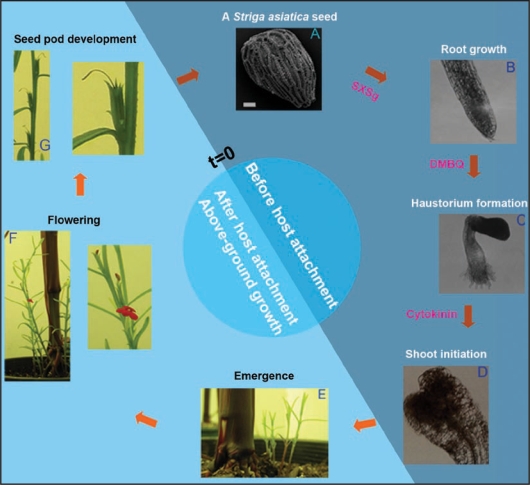Figure 1.
Life cycle of Striga asiatica. The life cycle of the parasitic angiosperm Striga asiatica is divided between early developmental transitions with known xenognosins (dark blue) and latter stages where the necessity of such signals is less clear (light blue). (A) Striga asiatica seed. The tiny seed, shown here by SEM, contains sufficient nutrients to sustain growth for only 5 days post-germination (Bar = 31.2 µm). To enhance survival, germination is coupled to the presence of xenognosins specific for germination, like the hydroquinone SXSg derived from the root exudate of Sorghum spp.9 (B) Vegetative growth. Upon germination, the growing seedling generates H2O2 to oxidize host cell wall phenols and release haustorial-inducing p-benzoquinones.10 These xenognostic signals diffuse back to the parasite and initiate development of the haustorium. (C) Haustorium development. Host attachment occurs via a specialized organ known as the haustorium. Once formed, the organ penetrates the host tissues, ultimately forming a vascular connection for parasitism. (D) Shoot apical meristem (SAM) development. Penetration of the host root precedes the initiation of shoot growth. In vitro, SAM initiation can be induced by cytokinins. (E–G). Emergence/Flowering/Seeds development on Zea mays. Striga asiatica seedlings emerge 8 weeks after inoculation on host roots and the mature plant develops closed flowers that give rise to seed pods containing approximately 500 seeds each.

